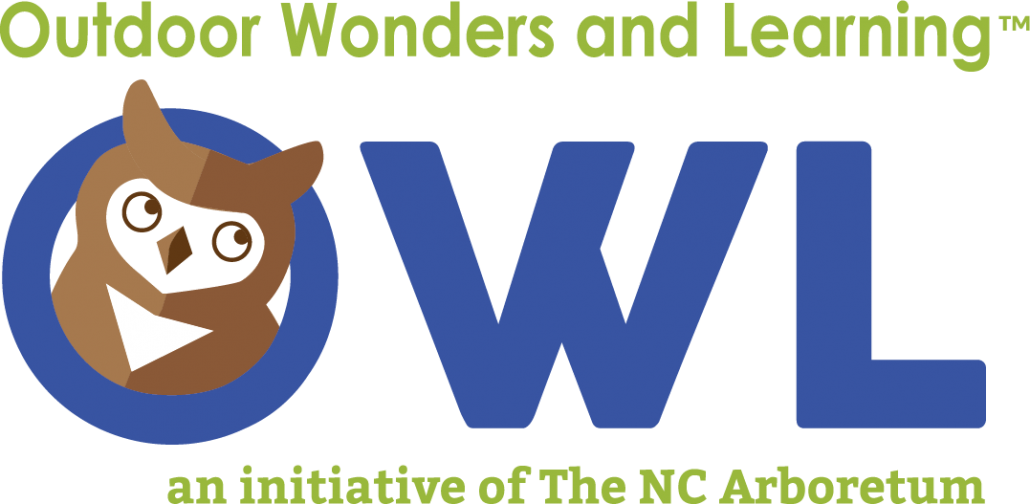Power Plant! (adapted from Project Learning Tree’s Tree Factory)
Elaborate/Apply
Students will have the opportunity to "become" a plant by role-playing the different parts and seeing how they function as a whole.
Supplemental Reading
The Busy Tree by Jennifer Ward
How Plants Grow (Time for Kids Nonfiction Readers) by Dona Herweck Rice
The Magic Schoolbus Gets Planted: A Book About Photosynthesis by Lenore Notkin
Duration:
30 minutesLocation:
Classroom for introduction and extension; Outdoor Study Area for activity
Procedure:
1. Have the students name things that humans need to survive (food, water, air) and identify which parts of the body help provide those basic needs i.e., mouth for drinking and eating, nose for breathing. Explain that plants and trees are like people in many ways and they have different parts that help them get the things they need to survive (sunlight, air, water, soil, space).
2. Take the students outside and have them sit around a tree. Ask them how trees and plants get what they need to grow. Relate the parts of plants and trees to the parts of a human body and how they each work in a similar fashion. Roots=feet and toes to hold the plant in place; trunk=body and bones to help the plant stand up strong; xylem and phloem= veins of the plant, moving food and water to all parts; bark=skin to protect the tree from damage and insects; leaves= hands to make food.
3. Where does the water come from? How does it get into the tree? (Roots) How does it get around to all of the parts of the tree? (The xylem “pipes” or “veins” carry the water from place to place in the plant) As they discuss each question, have them act out the answers. They can simulate roots by laying on their backs with their arms and legs spread out as they make slurping sounds and by chanting, “Gurgle, gurgle, gurgle. Water to the tree.”
4. How do trees and plants get the food they need? Do they chase after animals or grab things with their branches? (Plants make food in their leaves by using energy from the sun. This is called photosynthesis.) Students can imitate how the leaves make food by holding their arms up and opening and closing their hands chanting, “We make food; we make food.”
*You can also explain that plants “breathe” by taking in gases from the air and releasing other gases through tiny holes called stomata. The exchange of oxygen and carbon dioxide in a plant is an important part of photosynthesis.
5. How does the food and water get from place to place? (Plants have stems to hold them up and support their leaves. Trees have a modified stem – a trunk, and branches to support the leaves). The stem of the tree also contains the “veins” or “pipes” of the plant that move the water and food to different parts. Have the students feel how solid the trunk and branches are on the tree. They can pretend to be the trunk or stem by standing up strong and tall, tightening their muscles and saying, “I am the heartwood, I support.”
6. How do they stay protected from bugs? (The bark of the tree protects it from pests and disease. Like our skin, the bark keeps the “veins” of the tree safe from harm.) Have the students feel the bark of the tree and describe what it feels and looks like. They can act out the role of bark by forming a circle and linking arms or holding hands with all students facing out. They can shout, “Bark, bark, bark!” like protective guard dogs.
7. Finally, put all of the parts together to build a “Power Plant.” Split the students into three smaller groups, one being the roots, one being the bark, and the last being the leaves. The root group will stand close together linking arms and chanting “Gurgle gurgle gurgle. Water to the tree.” The bark group will form a circle around the roots, join hands, and shout, “Bark, bark, bark!” The leaves should stand at various distances around the bark chanting, “We make food; we make food” while opening and closing their hands.
8. Review by asking the students how a plant or tree is similar to a factory. Ask them what different departments are this “factory” and what jobs are done by each.
A. Roots Department – the plant is anchored to the ground and water is absorbed from the soil.
B. Leaves Department – use sunlight, air, and water to manufacture food for the plant. When the plant is able to get enough food it can grow and produce more leaves, flowers, and even fruits and nuts/seeds.
C. Stem/Trunk Department – Supports the branches and leaves; contains all of the “pipes” or “veins” that transport the food and water around the plant.
D. Bark Department – perimeter defense of the plant, keeping it protected from pests and disease.
Copyright 2017, Project Learning Tree. Permission to adapt and reprint this activity for Project OWL has been granted to The North Carolina Arboretum. Educators can receive the complete guide by attending a PLT workshop. Contact Renee Strnad at 919-515-5518 or renee_strnad@ncsu.edu or visit www.plt.org for more information.
Extensions:
Have the students draw what the inside of the “Power Plant” or “Tree Factory” might look like based on the jobs done by the different departments.
Learning Targets:
1. Understand the basic structures of plants and how those structures are used to acquire resources and fulfill the plant’s basic needs.


Leave a Reply
Want to join the discussion?Feel free to contribute!